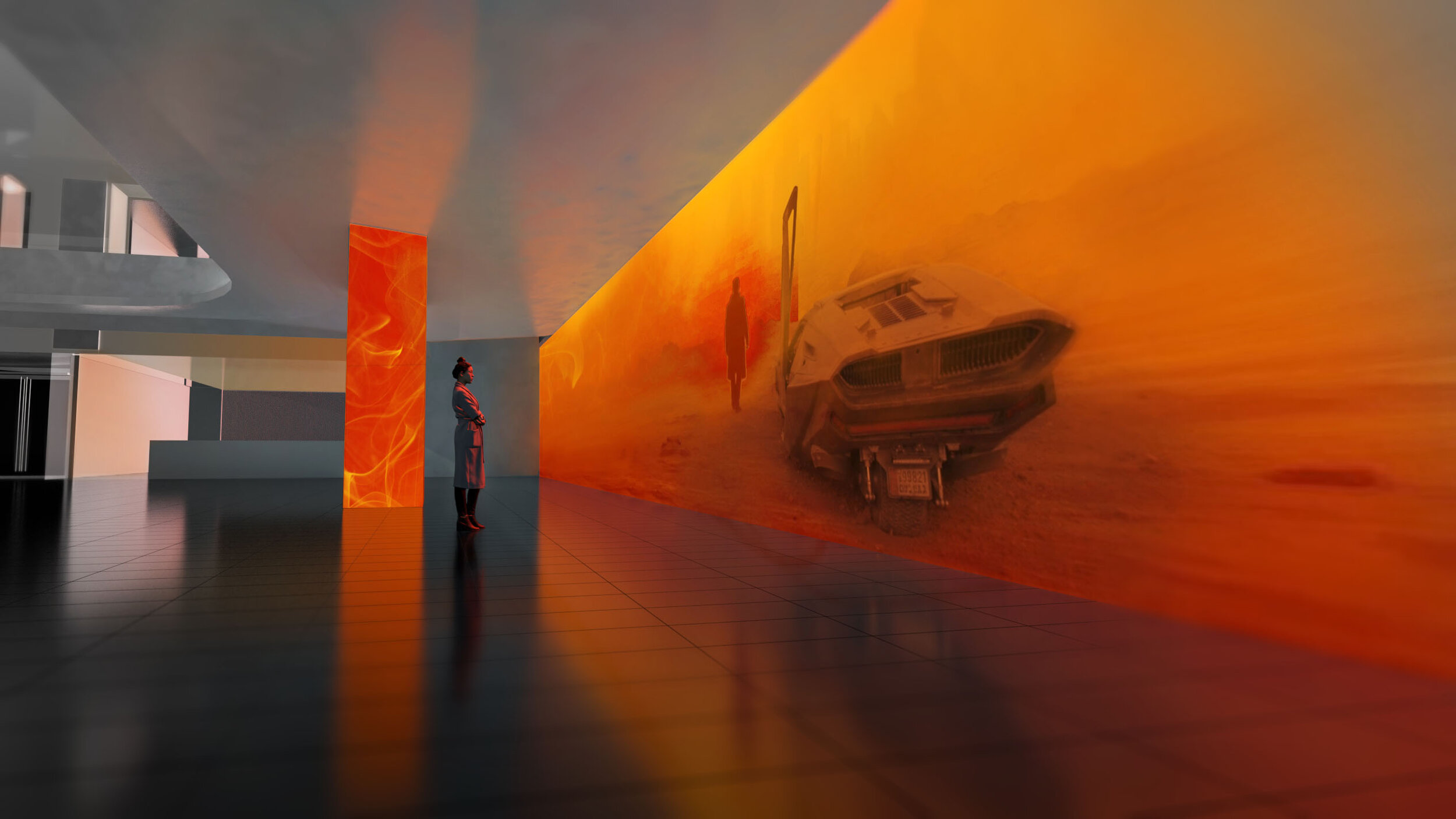
AT&T Corporate HQ Lobby
AT&T approached Obscura Digital and asked us to imagine an immersive, dynamic, and engaging space to that would manifest their identity as a company into the lobby of their corporate headquarters. The space serves to reflect the identity of the company to the employees who experience it daily, while also as a first impression and welcoming space for incoming business and visiting executives.

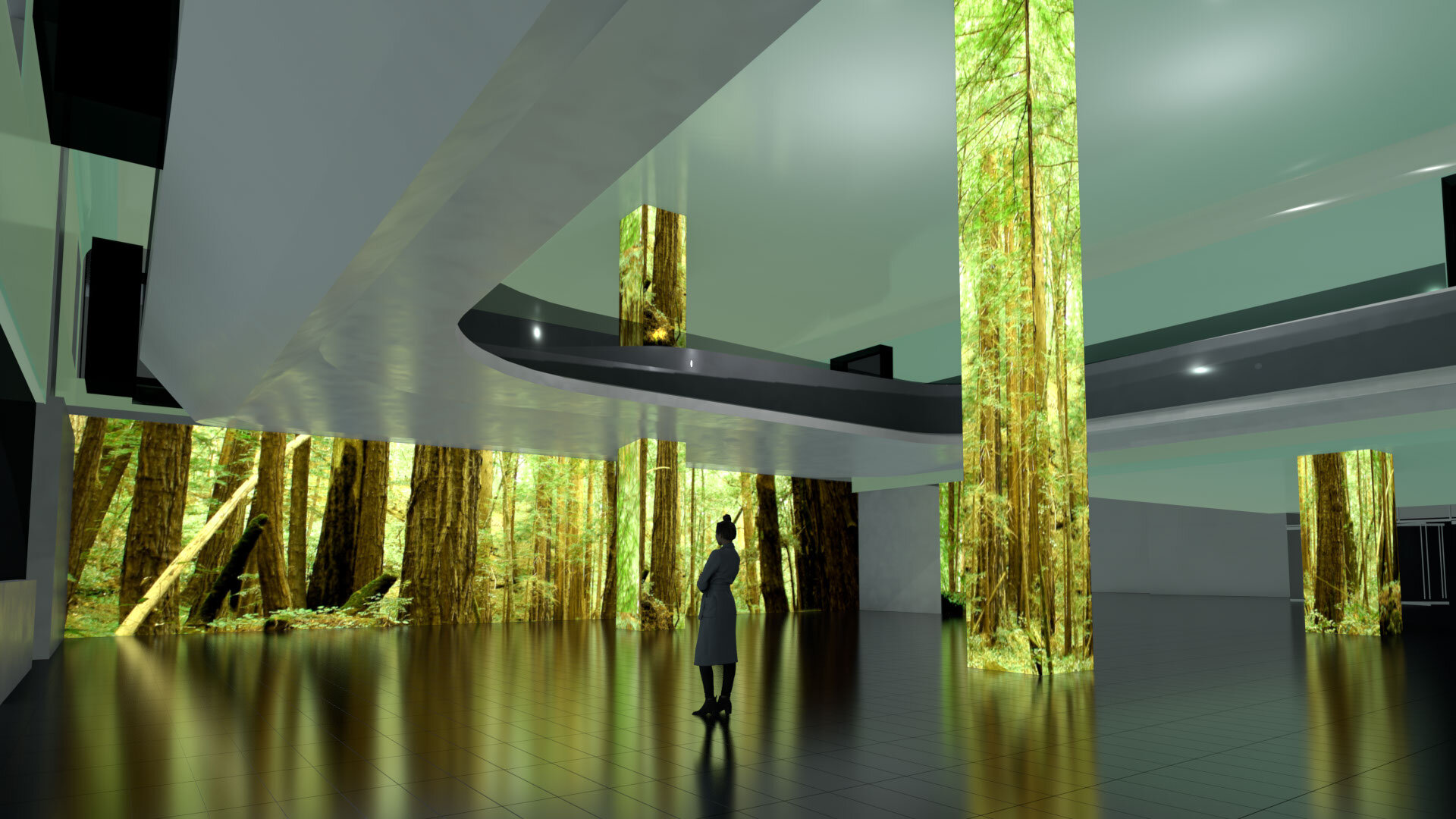
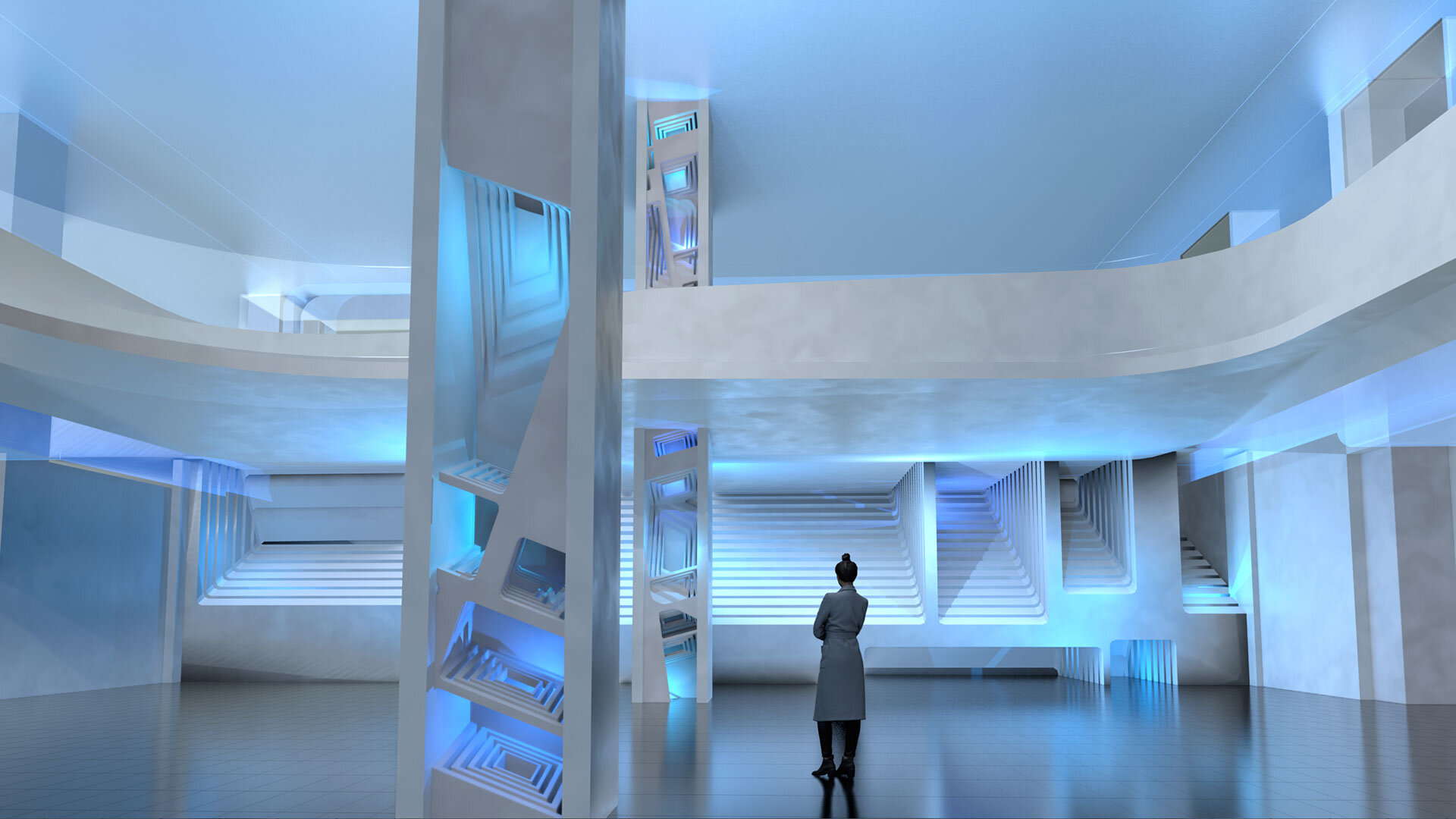
The images shown above are concept renders of our final design that AT&T chose for their lobby.
Below, I’ll show a bit of the process leading up to the winning design. Throughout the Concept Development phase, I worked with Obscura’s then Executive Creative Director, GMUNK, to develop and visualize a set of widely varied designs.
What follows is a brief look at our theoretical approach, and a selection of concept visualizations that I created over the course of the project. All concept renders on this page were created by me (unless otherwise noted), modeled and rendered in Blender 3D, with post processing using Adobe CC.
Considering Brand Values
AT&T has long played an important role when it comes to connecting humans remotely through the use of technology (they’ve been doing it so long the second T stands for telegraph after all). While they’ve previously used conductors, electricity, and lightwaves to connect us, their recent merger with Time Warner has added a new element to their connectivity— a connection through culture and story. The entertainment properties under their name bring us together through shared stories and significant cultural icons that inform societal narrative. In our meetings, AT&T emphasized that they want to celebrate the cultural wealth of their entertainment business, as they’re no longer “just a phone company.”
Informing Design Direction
AT&T’s Lobby will celebrate the ideas and motifs that make the company unique, while using responsive data to beautifully transform an information network into a living work of art. These transformations will be stylistically layered in a way to augment and transition between AT&T’s vast library of iconic entertainment and intellectual property. Through an innovative fusion of art, nature, technology, and design, we aimed to design an aesthetically unified space to inspire wonder and curiosity in the minds of visitors, in addition to pride and belonging amongst employees.
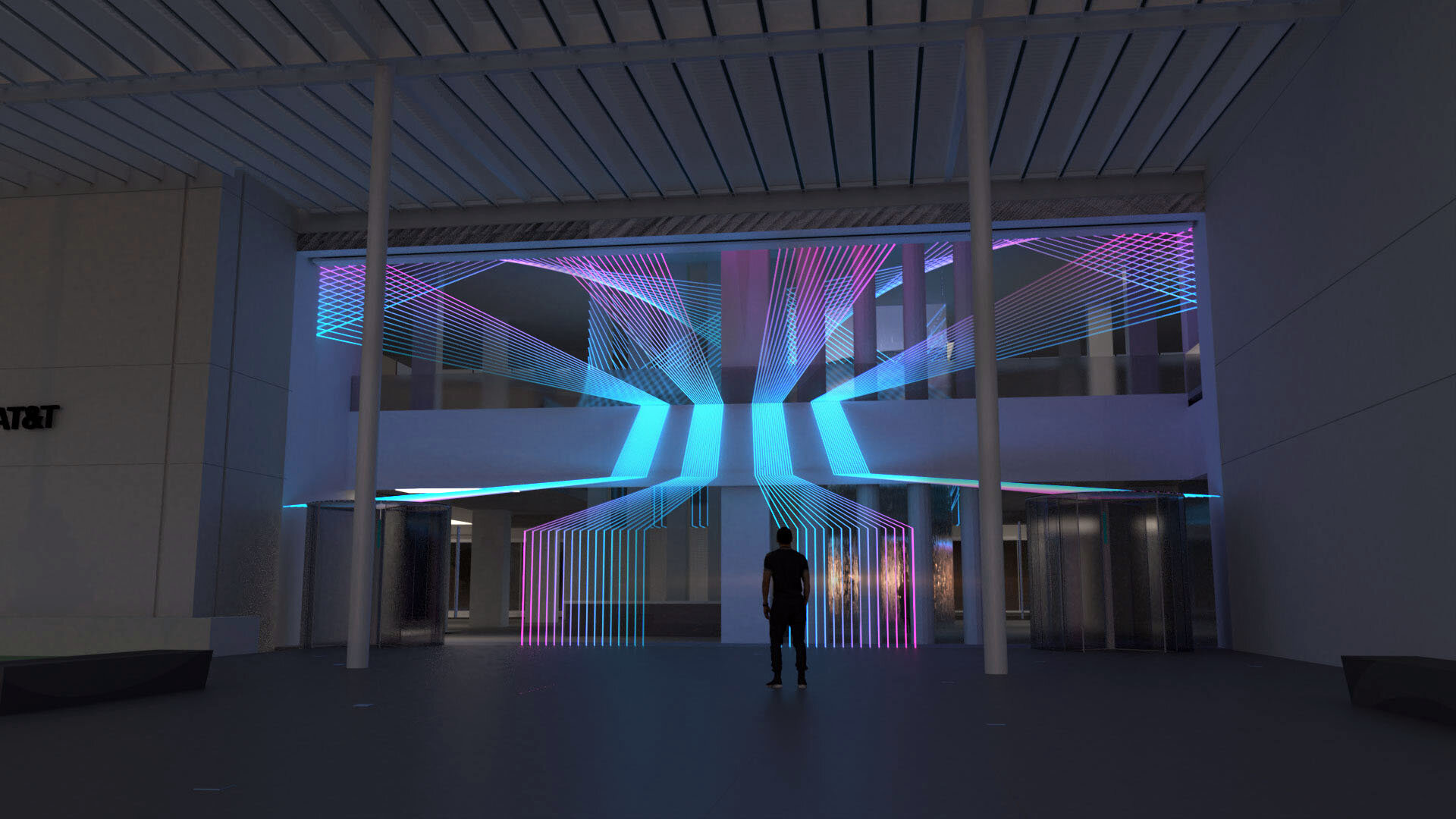
Concept Ideation: Threads
We started sketching out different ways to fill the space. We were familiar with AT&T’s brand values from our work on the Discovery District, so we revisited our prior design inspiration about what makes AT&T unique, updating moodboards of imagery and inspiring structures that bring to mind an essence of human connection and cultural gravitas. We worked through the physical constraints of the space in a spirited collaboration with the architects at Gensler.
In this thread, we were exploring the use of emissive fiberoptic strands that would weave through the architectural space, in a metaphor for the connective beams of light that permeate the fabric of our physical, social, and cultural reality as they connect our devices. These threads occasionally converge into an array to span borders of displays, which can inform the colors of the strands as they permeate the lobby.
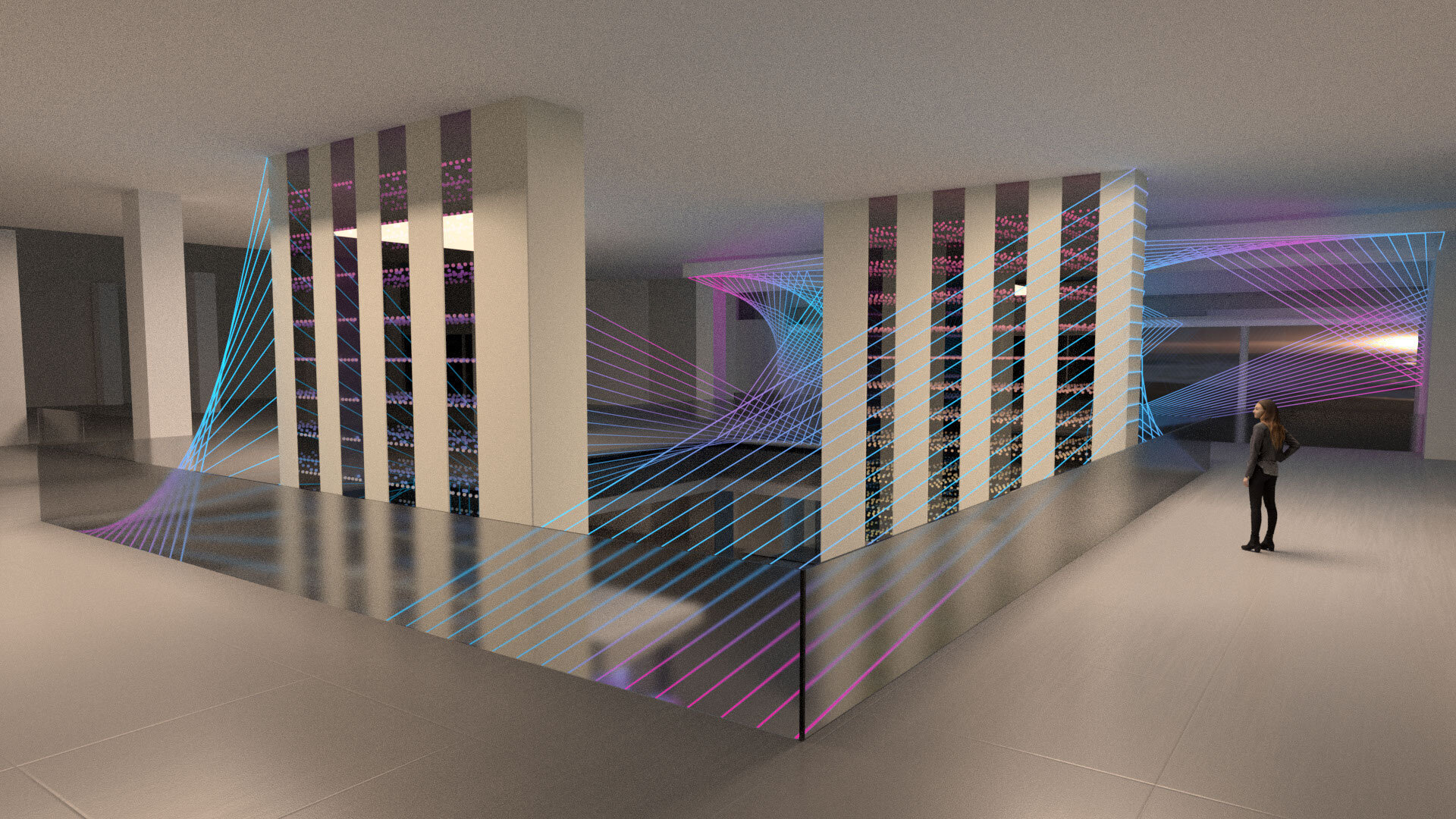
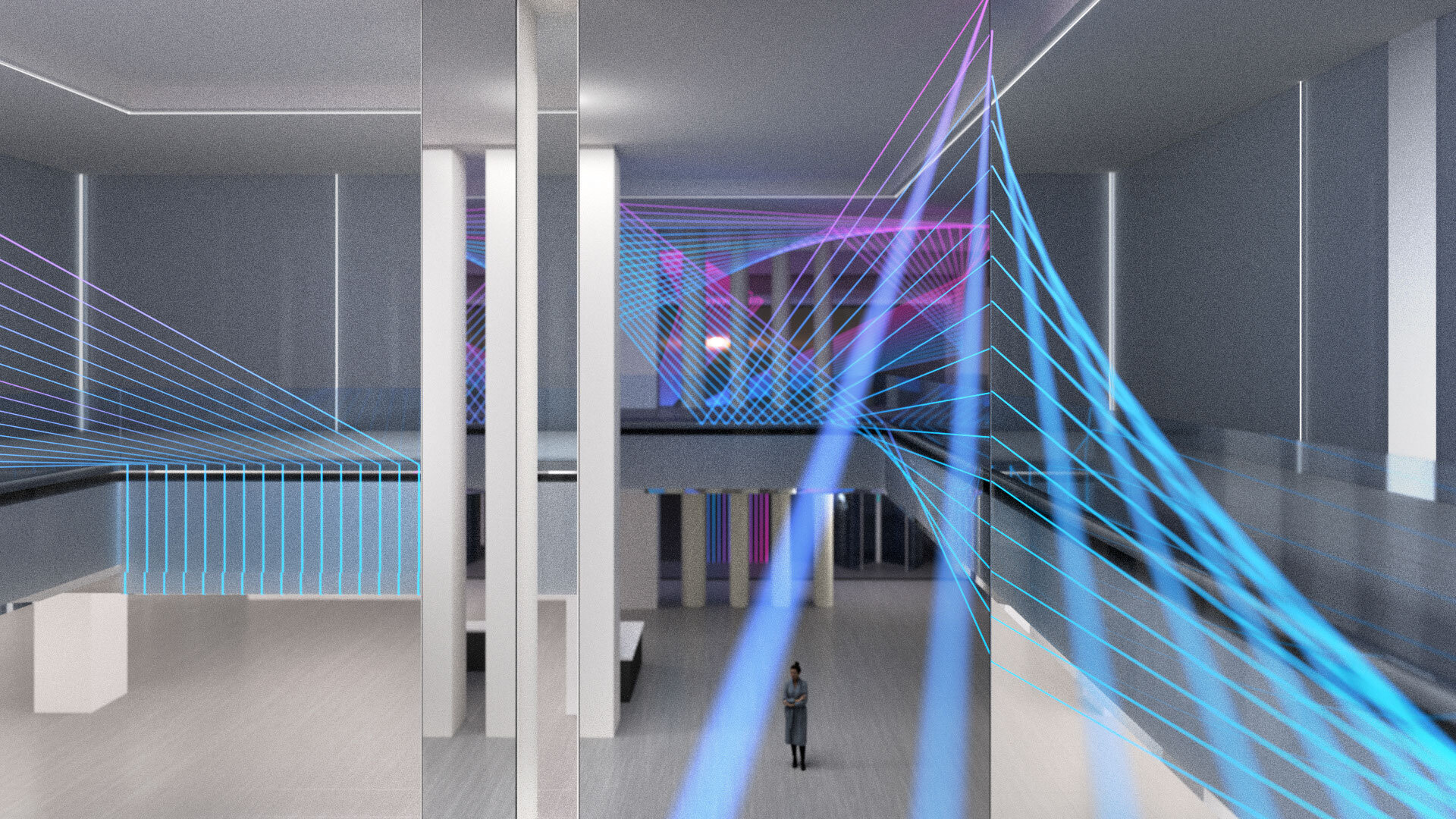
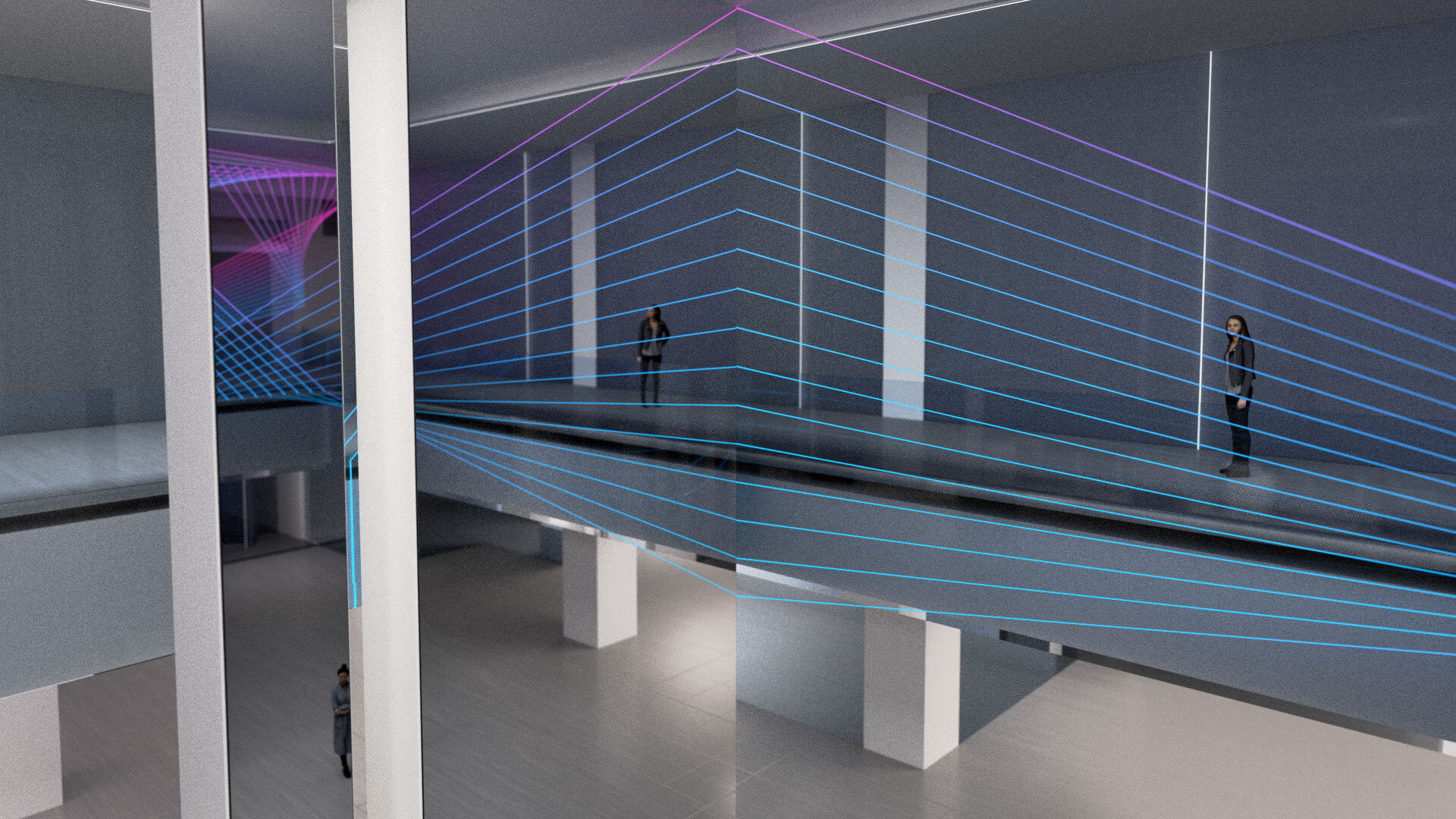
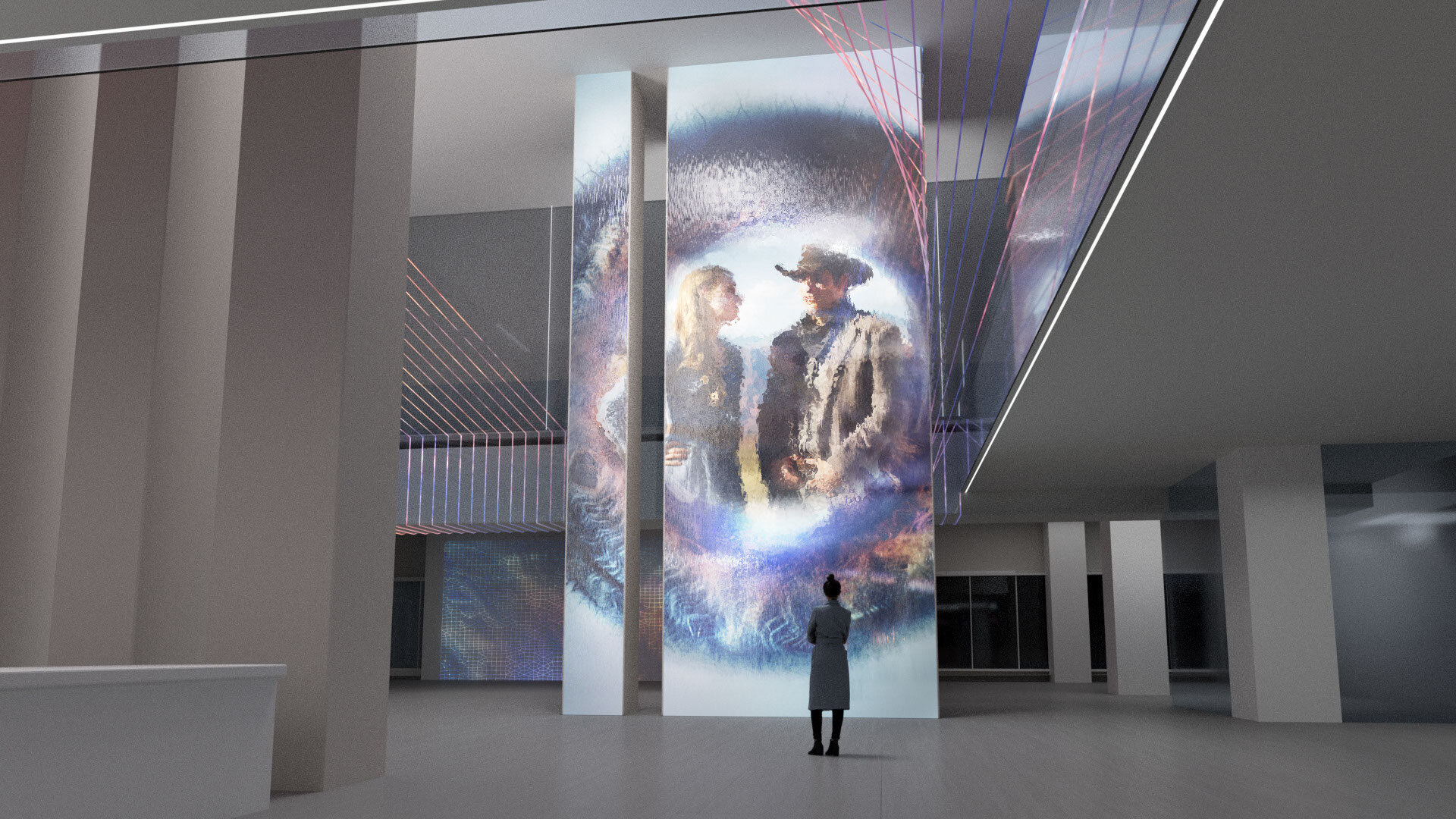
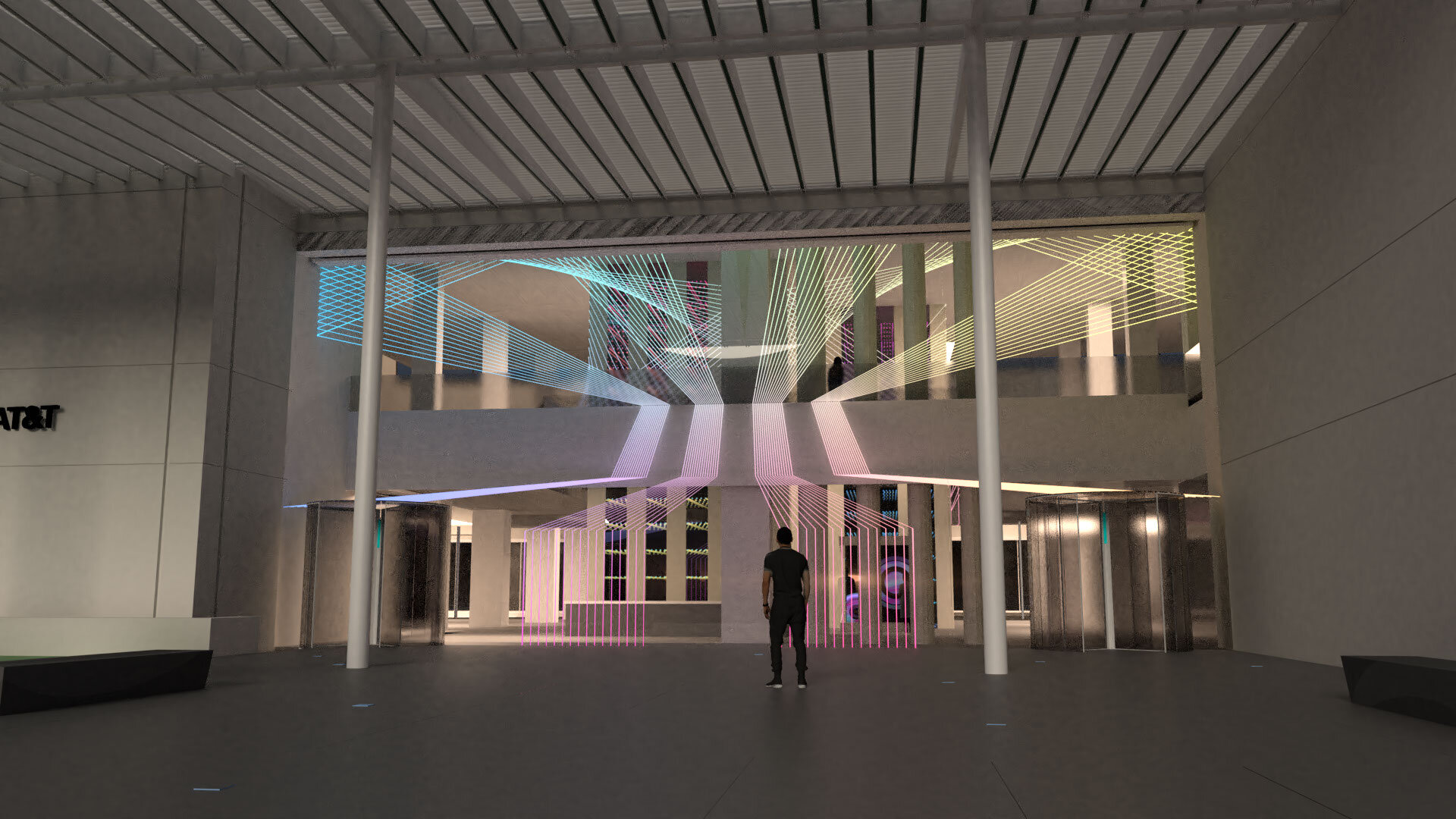
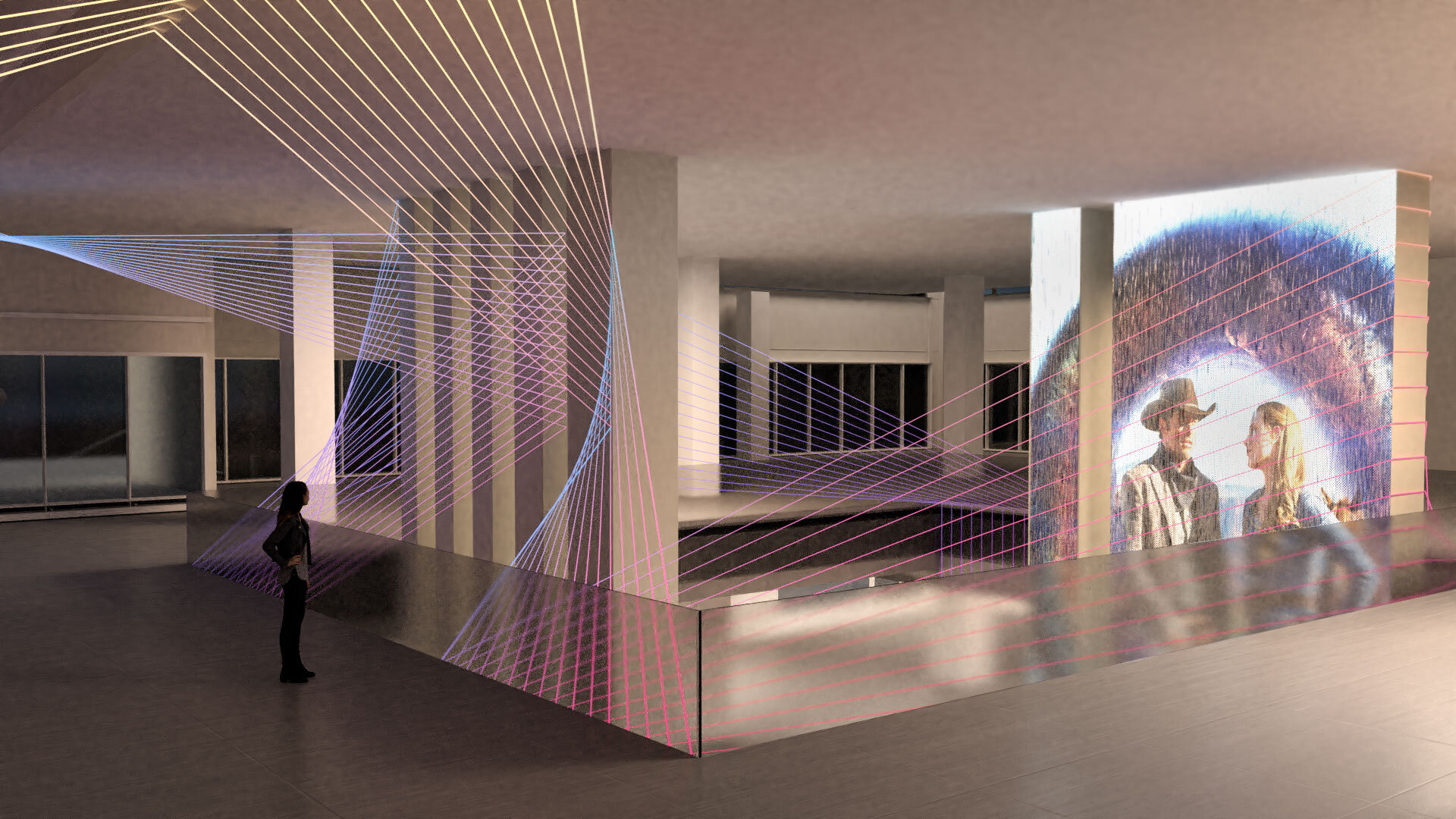
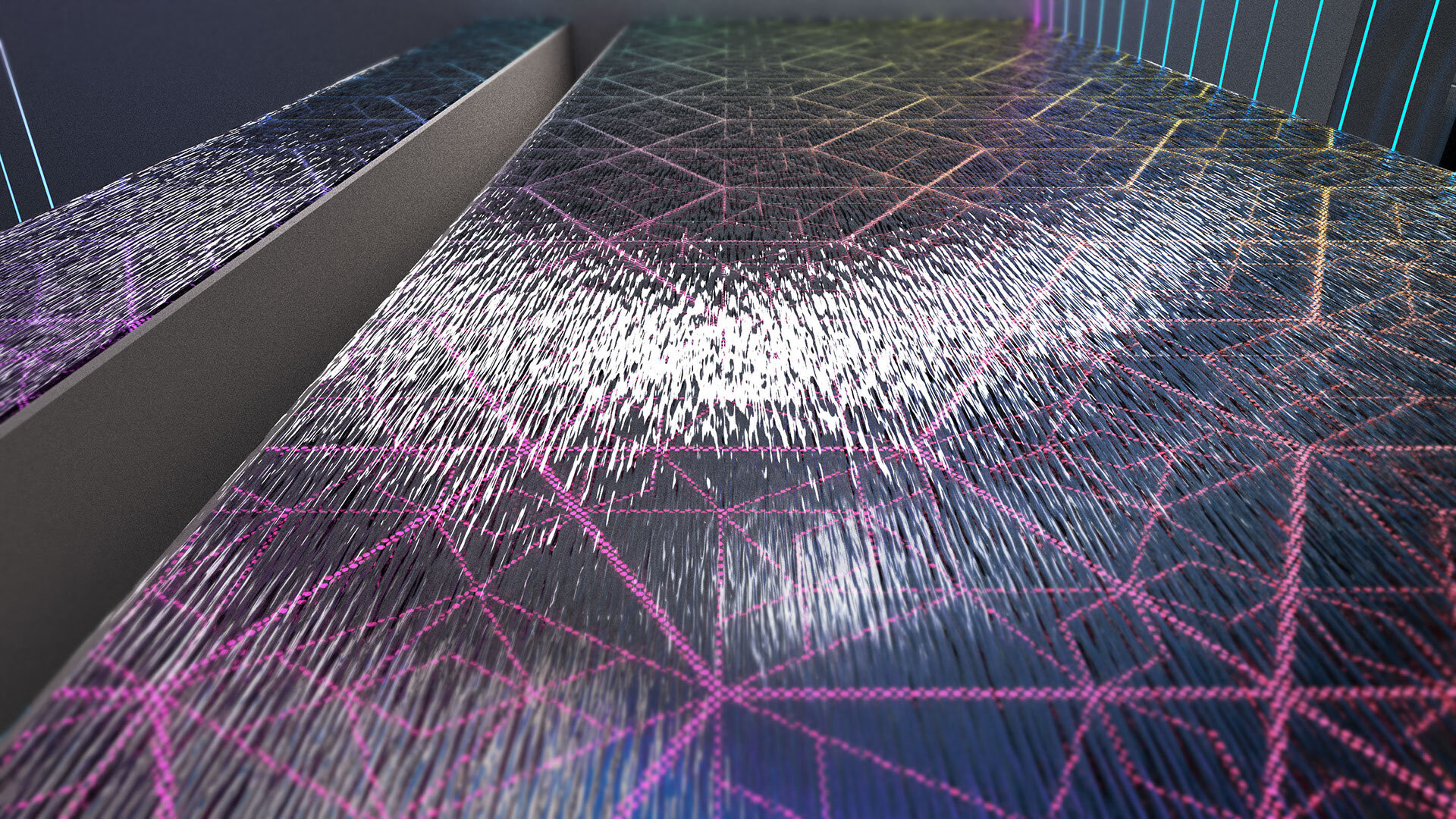
Concept Ideation: Reflections
Another theme we explored was reflection and refraction. Both concepts bear obvious importance when it comes to the propagation of light beams, which AT&T uses for communication purposes. Additionally, reflection adds architectural intrigue and the illusion of extra space, and refraction can add a certain dimensionality. As far as the content populating the screen, we wanted to reflect a gestalt of humanity, both through data and the cultural gravitas of Time Warner’s recently acquired entertainment properties. By holding a prism to the vast amount of data that AT&T generates and utilizes, we would reveal interesting aspects of humanity and AT&T’s important role in its fabric. Beyond content direction, we considered a few ways to implement physical manifestations of reflection and refraction.
One core principle behind our treatment of screens was that any media platform should look good even when it was turned off. Gmunk had an idea for integrating a display into the space by overlaying materials that would add an intriguing effect when turned on, and add architectural beauty with the display off. The idea was for water to flow over the surface of a two-way mirror with an LED display behind. Adding a layer of water over the mirror display would work refract both the display and the mirrors’ reflections, becoming an intriguing overlay that would differentiate such an installation from being just another giant screen.
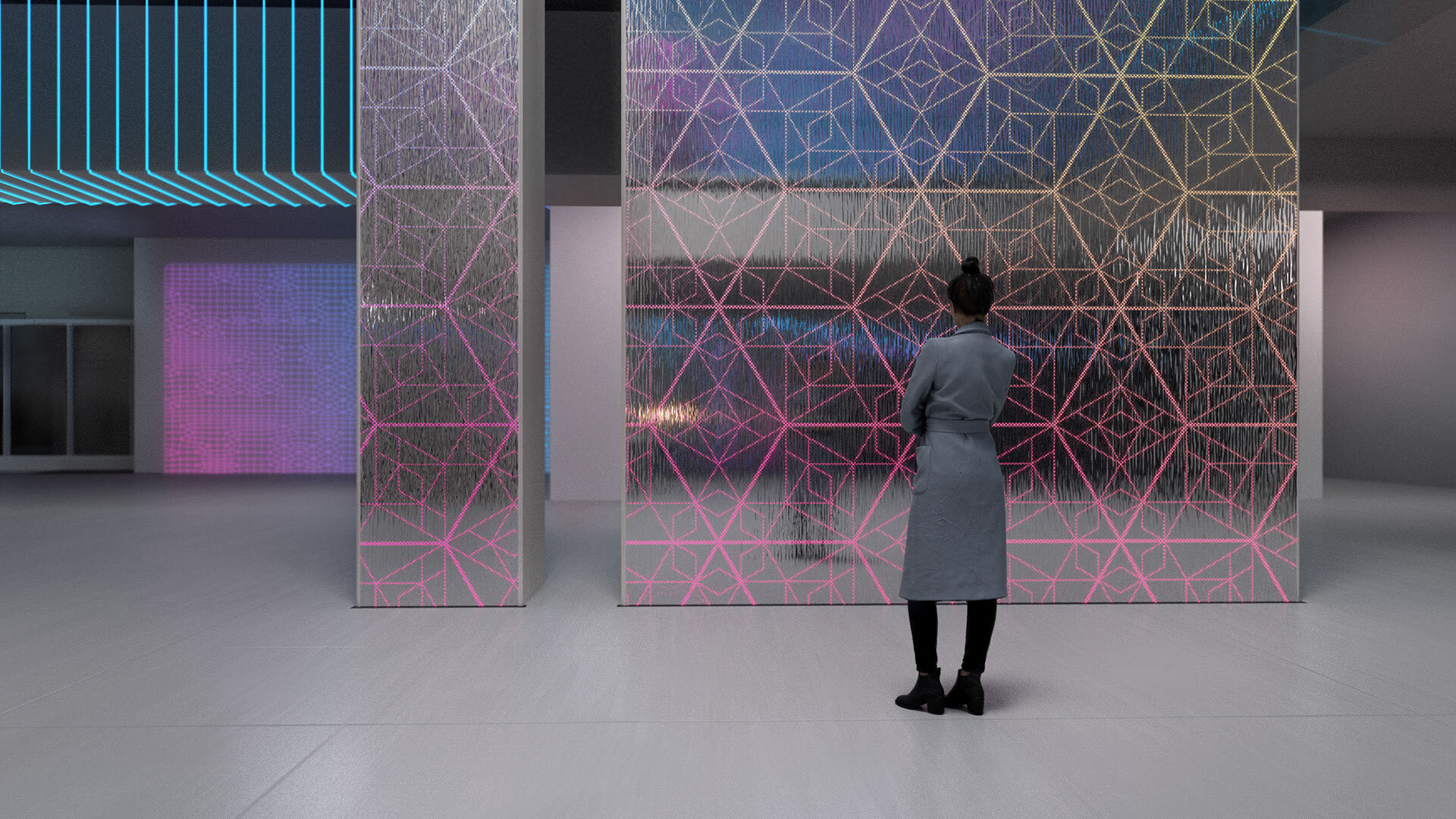
Another idea that we explored within the overarching theme of reflection/refraction was the use of two-way mirrors that would house volumetric light arrays inside. Four pillars sit in the middle of the lobby area— which presented a design challenge, since they were a sizable obstruction in the space. In this concept, we turned the constraint into an opportunity, using the spaces between as a vessel for the infinite. We imagined the spaces in between pillars to represent the information channels AT&T provides— and though the channels have finite bounds, an infinite expanse is contained within.
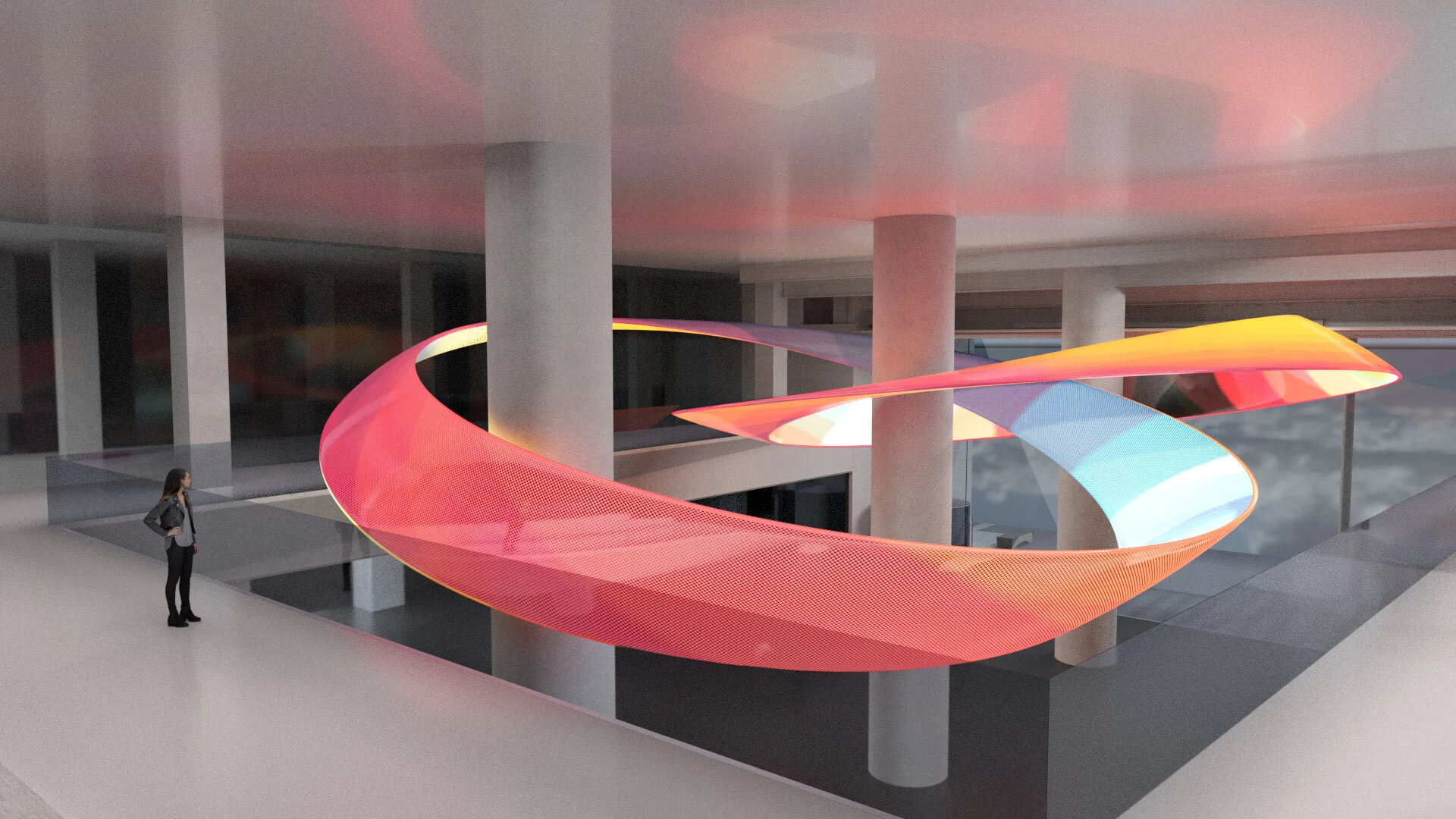
Concept Ideation: Hanging Sculpture
In another round of iterations, we looked to create a mesmerizing, dimensional sculpture suspended overhead— a centerpiece feature that draws the attention, with a sense of movement and life that matches the energy of people passing through the space.
Unconventional LED Displays
Strange Lïnk
This concept imagines pair of interlocked rings– each one a Möbius Strip, elegantly folding in on itself. The surface is covered in LED’s, lighting up with beautiful data visualizations that take advantage of the unique mathematical structure— a ruled surface that is non-orientable. These rings represent the notion of connection, since they are inseparably bound, and even though they never touch, light and animation weave them together, filling the space with motion.
Helical Wave
This design is composed of a twisting series of suspended, LED-wrapped planks– 2-dimensional surfaces arranged in 3-dimensional space. We aimed to create the feeling of organic flow overhead– a tangible manifestation of the motion of the network, data, and information moving in a way that feels organic. The dynamic arrangement would also allows for interesting volumetric display in slices.
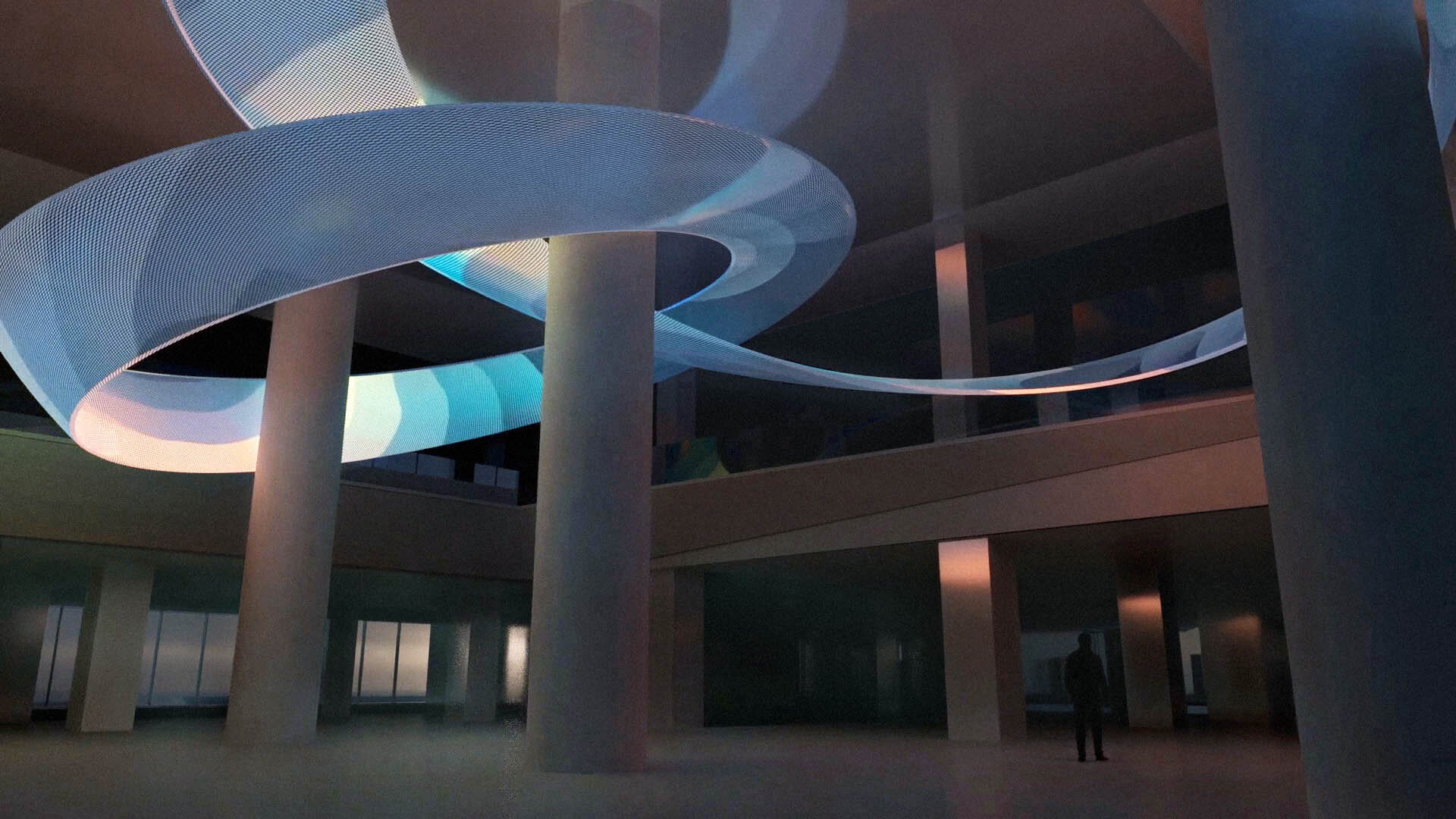
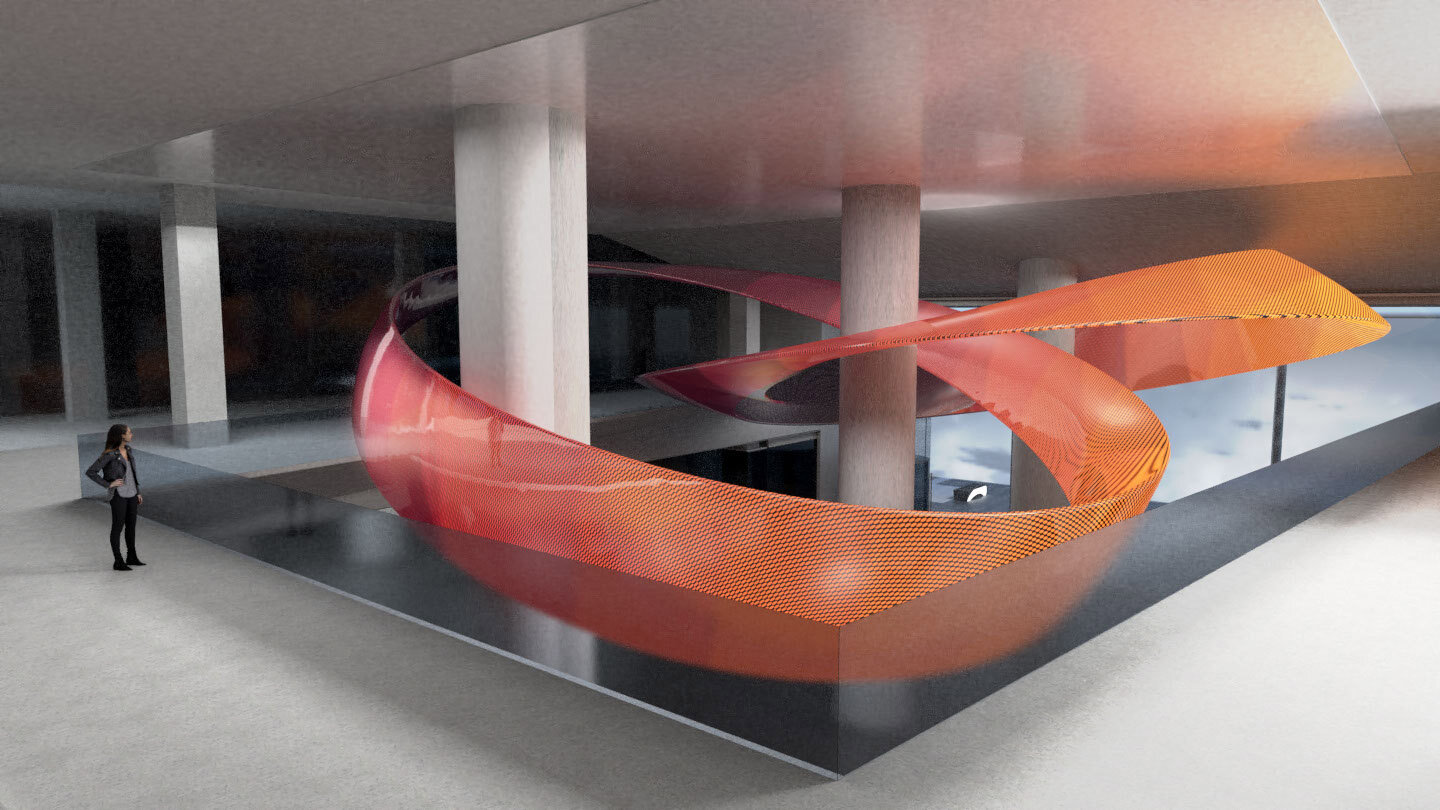
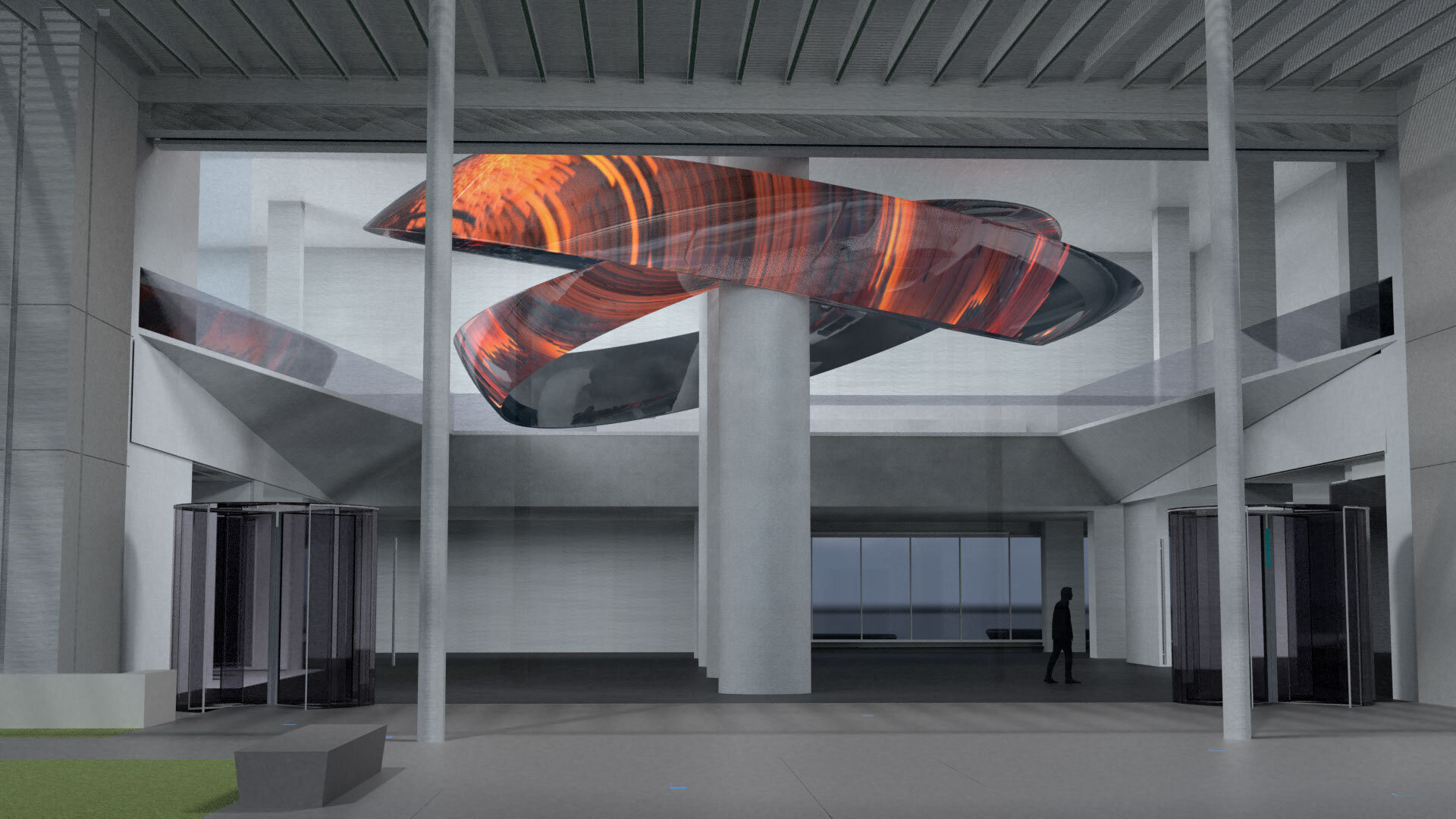

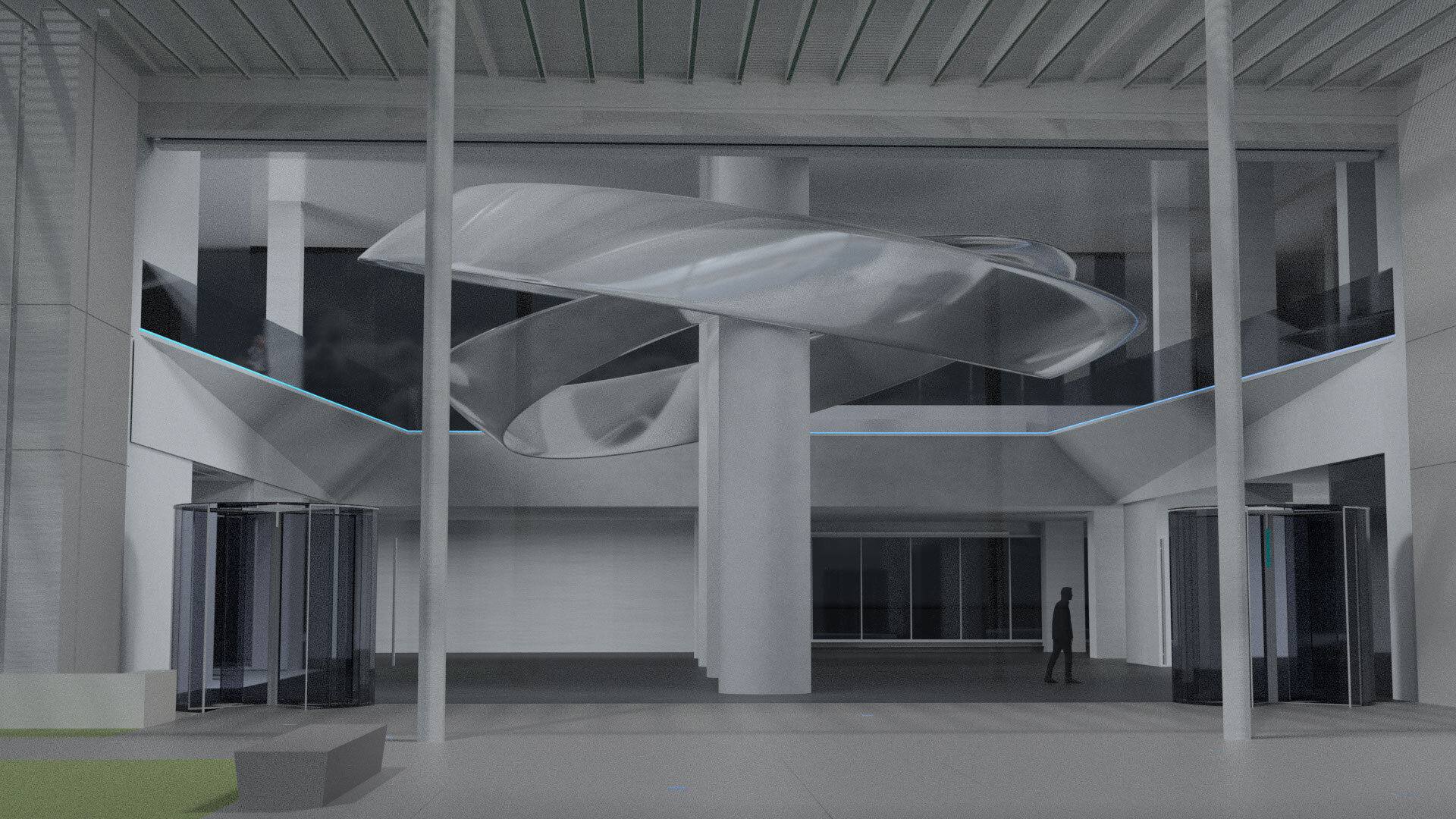
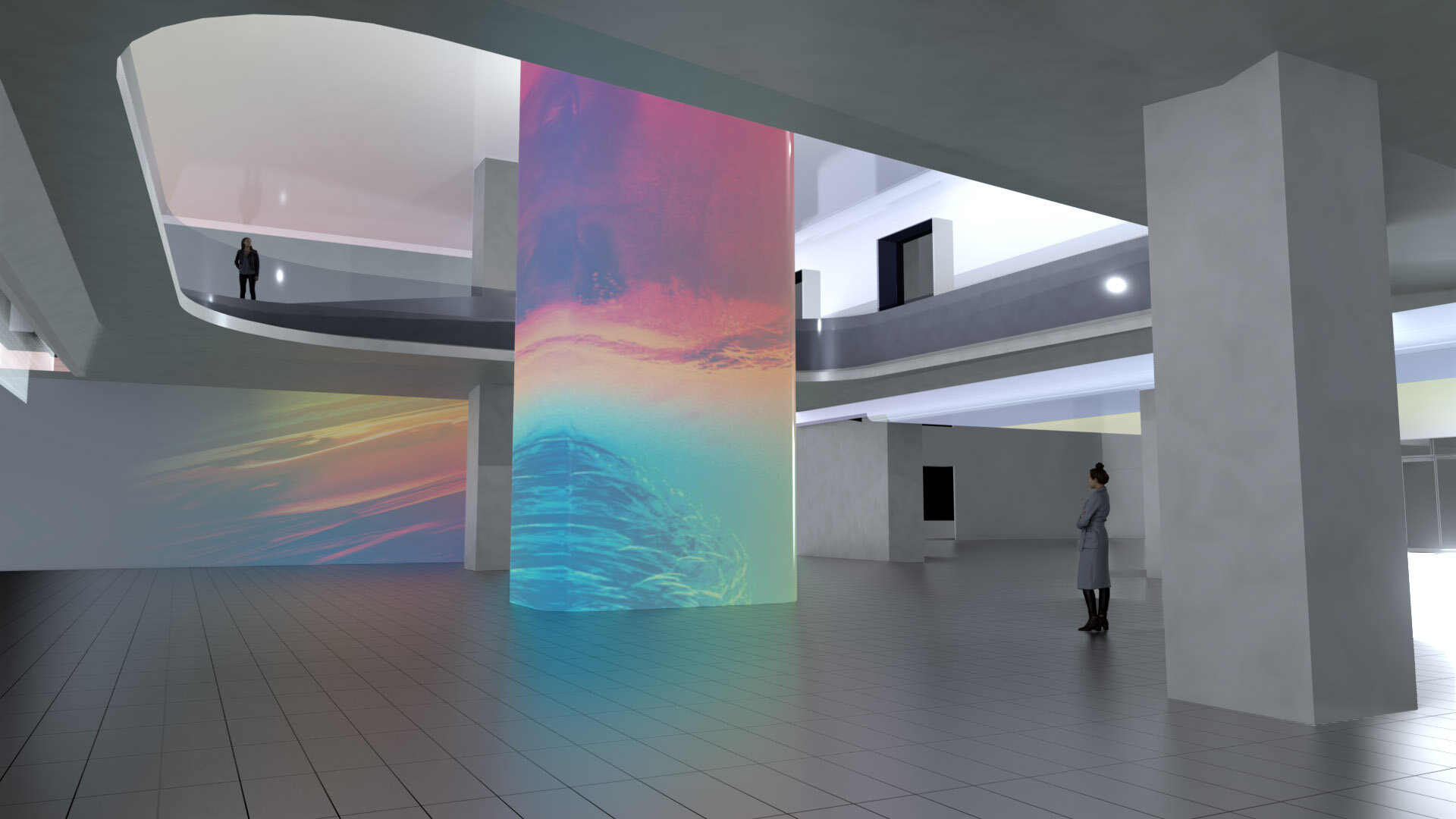
Concept Ideation: Wall and Pillar
Integrating Media Platforms
While previous concepts had been oriented toward non-traditional ways of activating the space, we also looked to explore ideas that integrated into the existing architecture. These ideas explored the use of a central, seamlessly wrapped display, coupled with a huge immersive media wall.
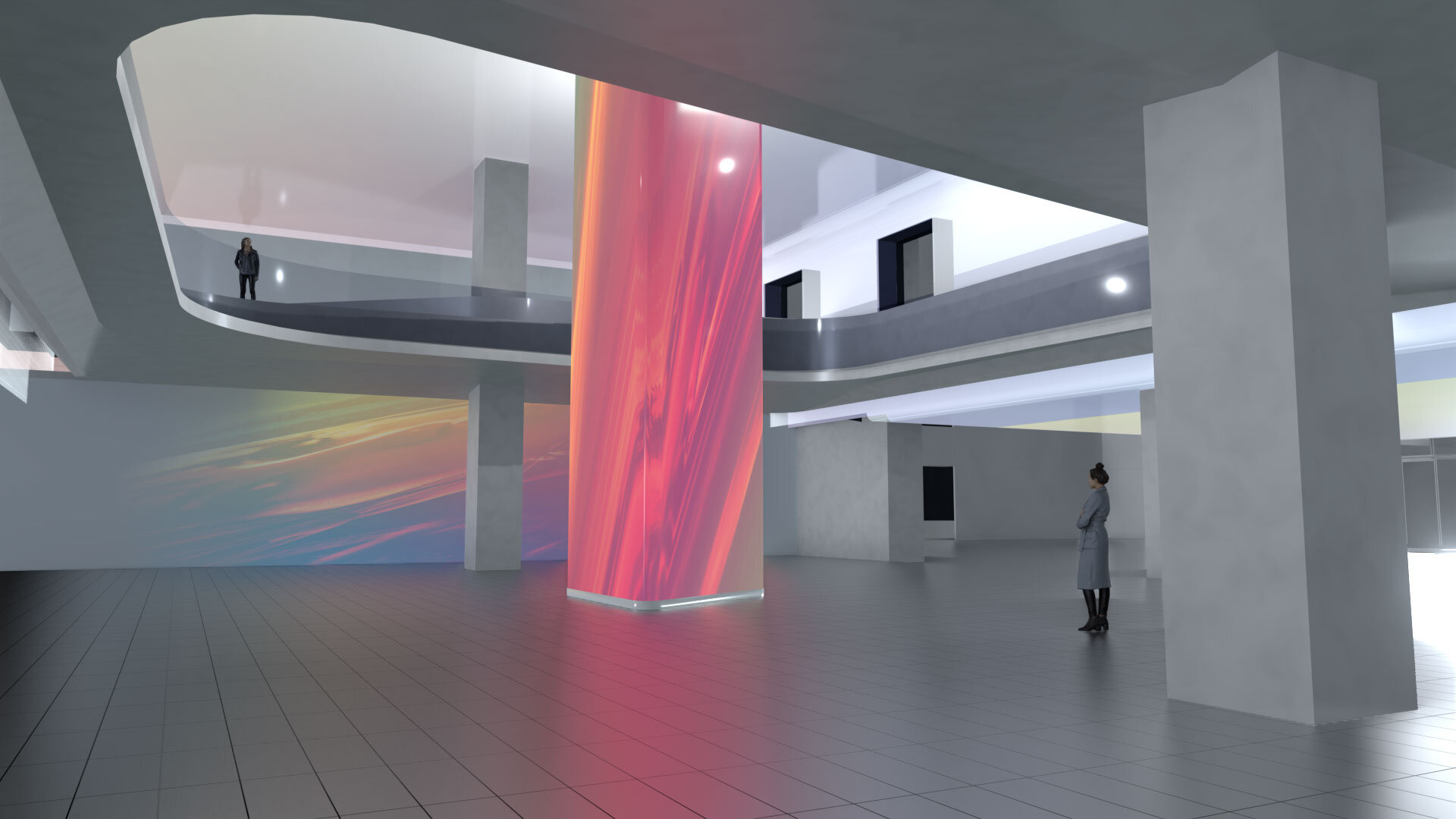
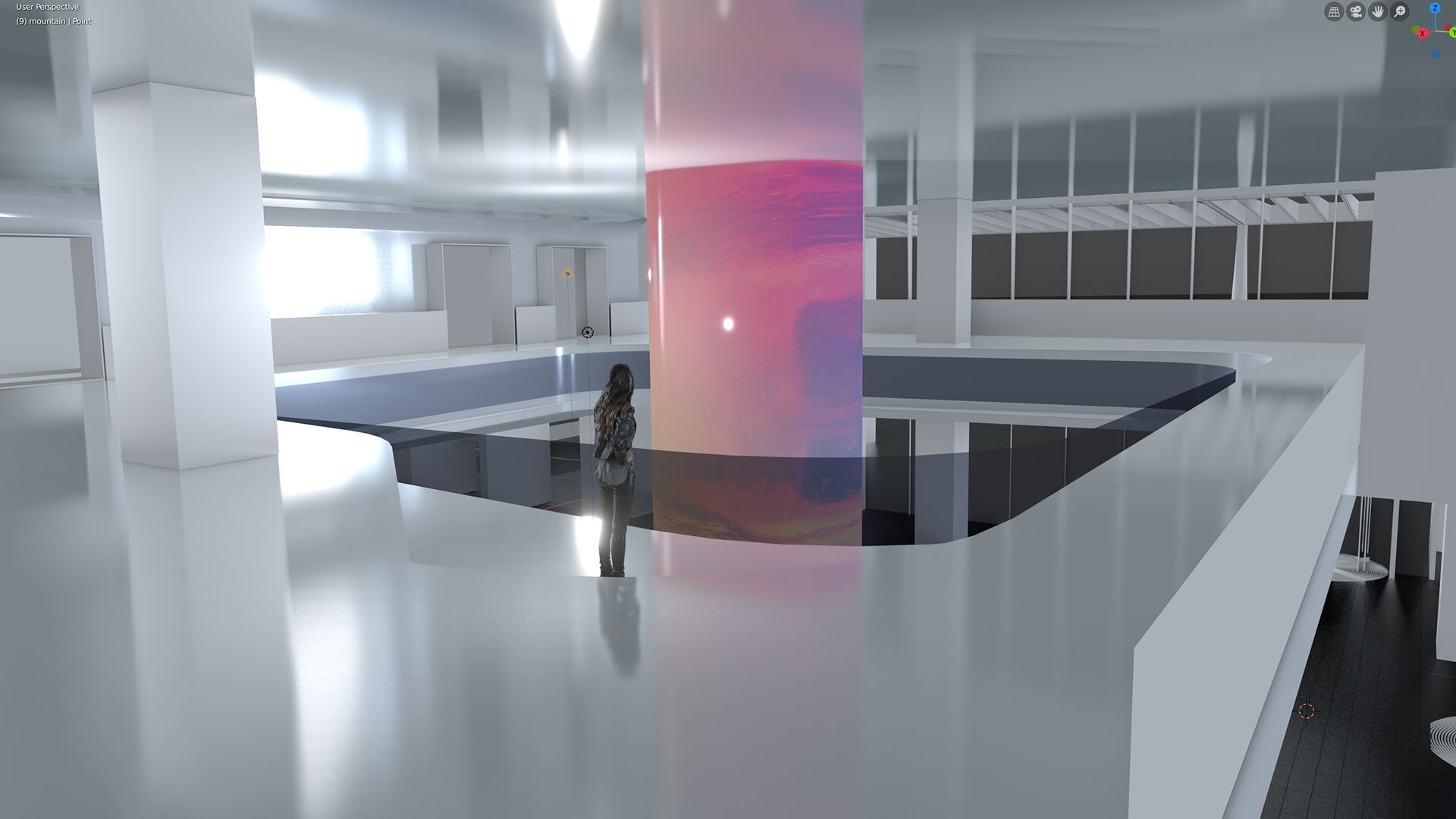
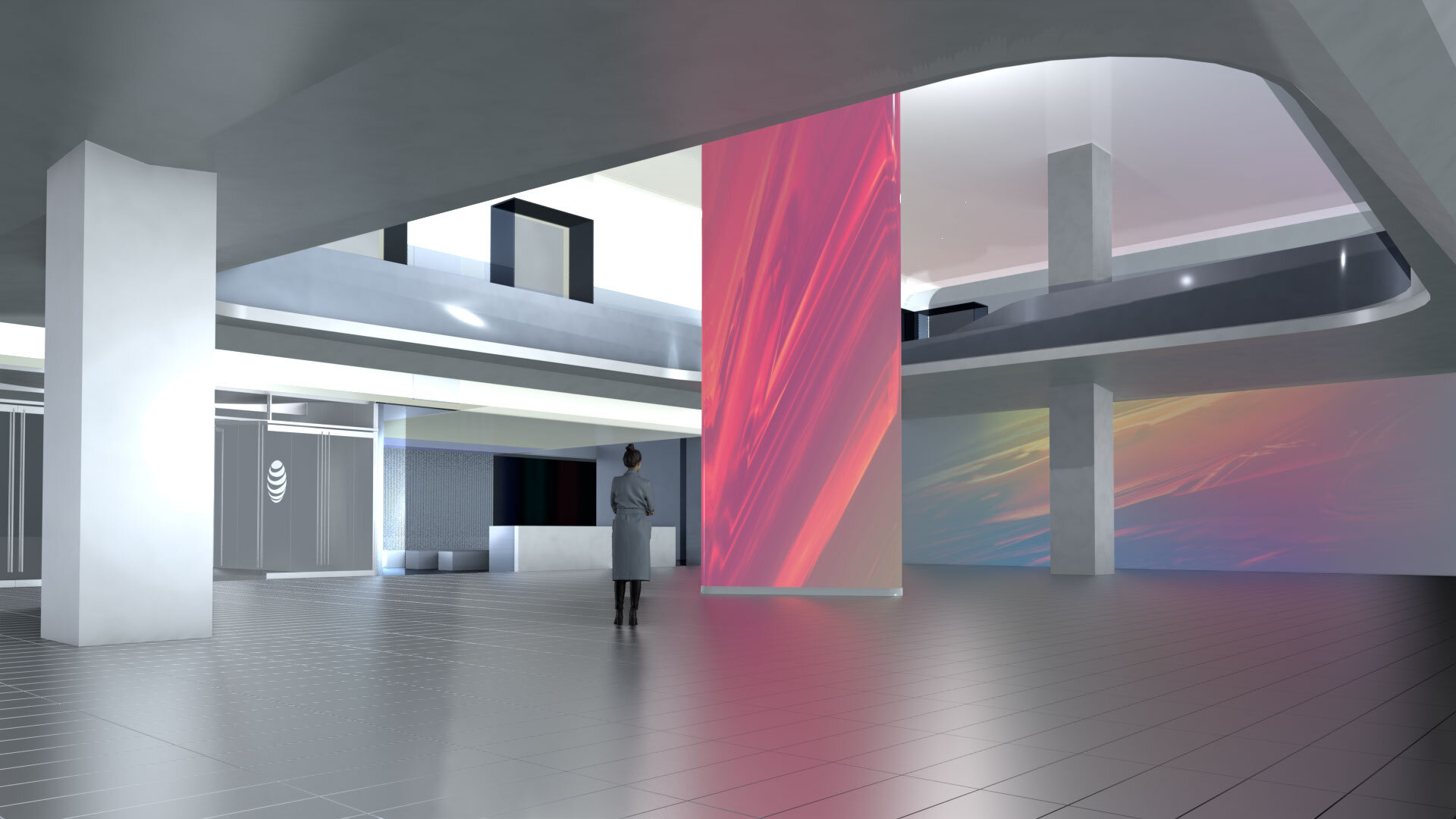
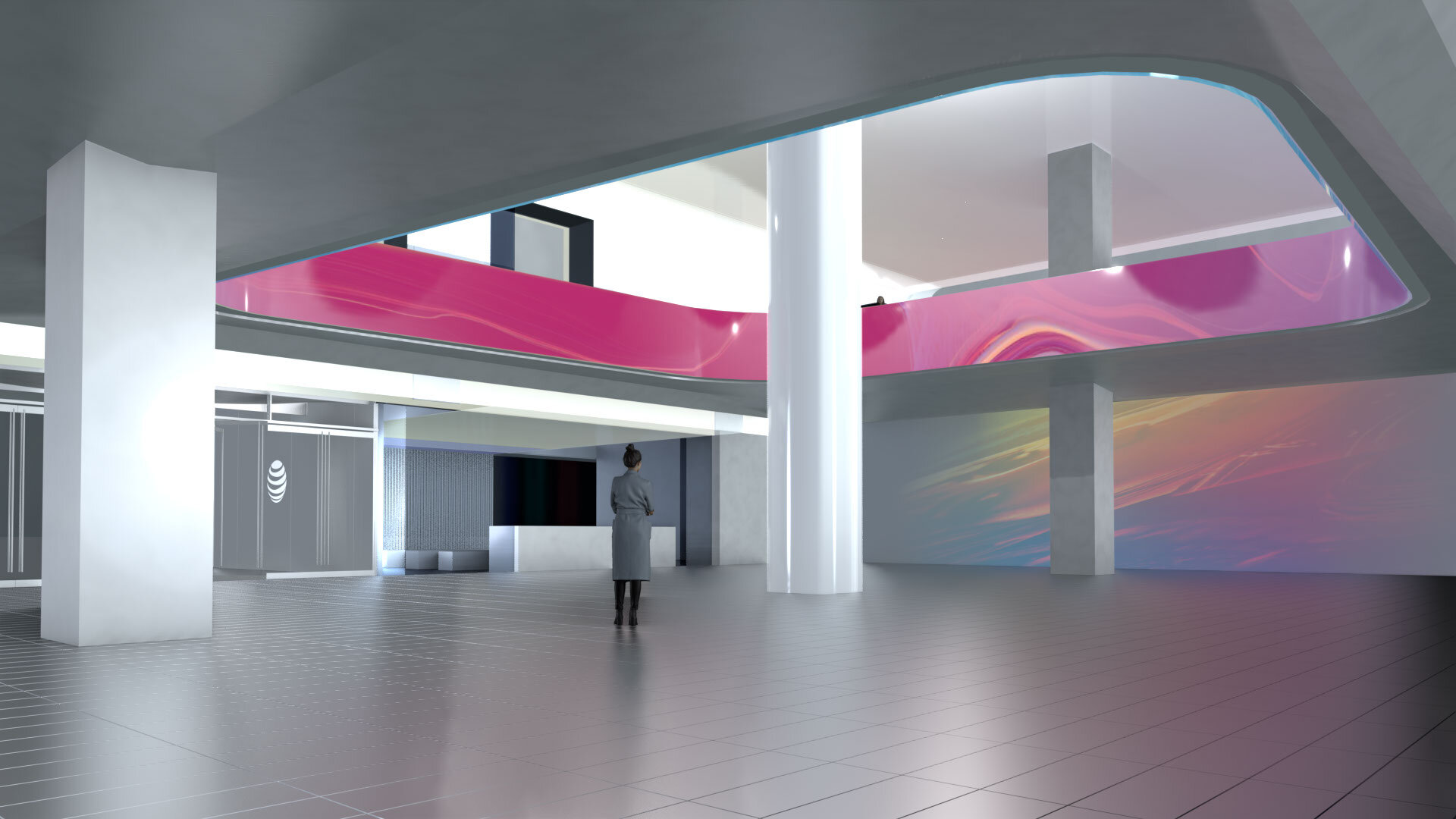
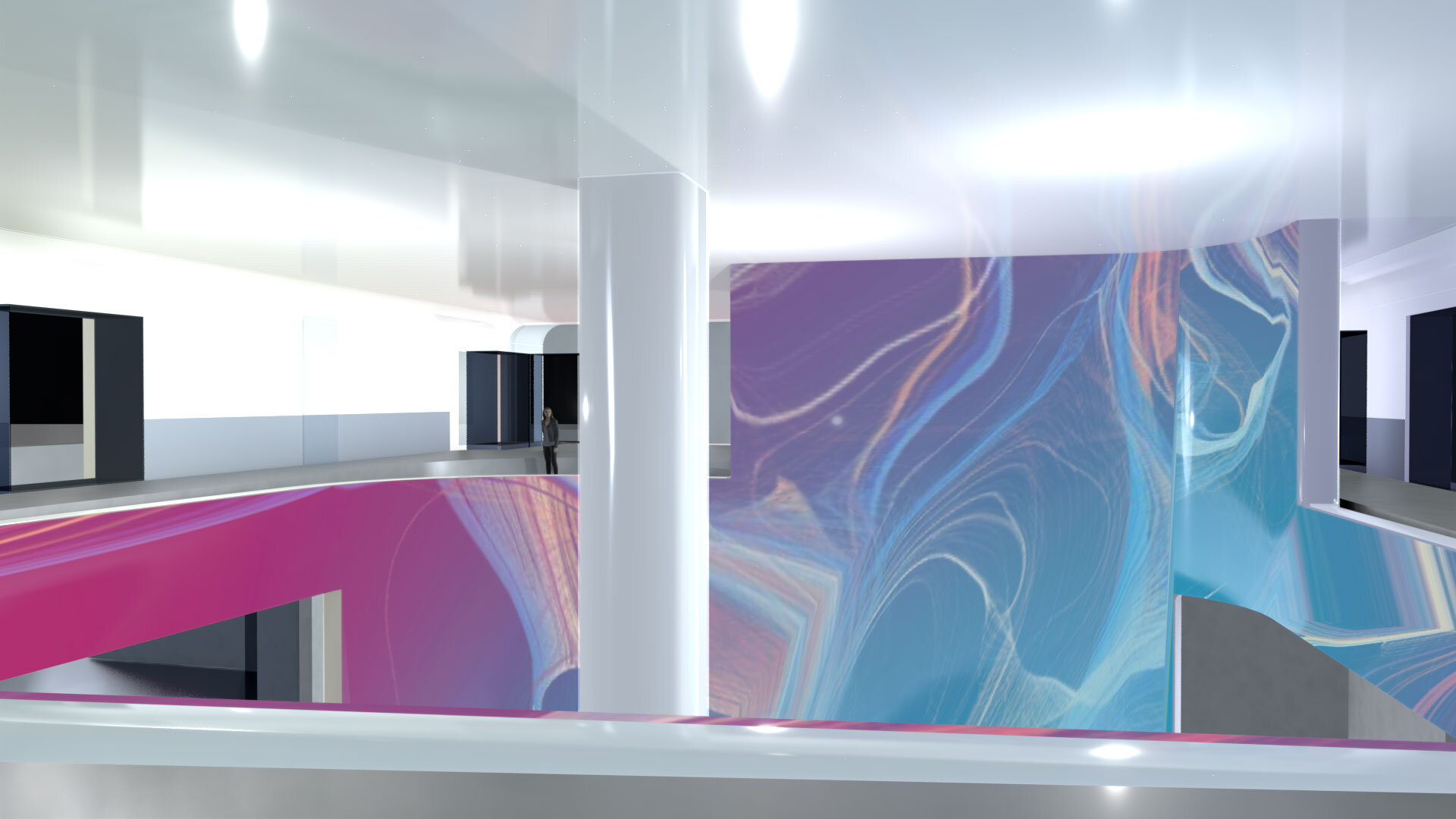
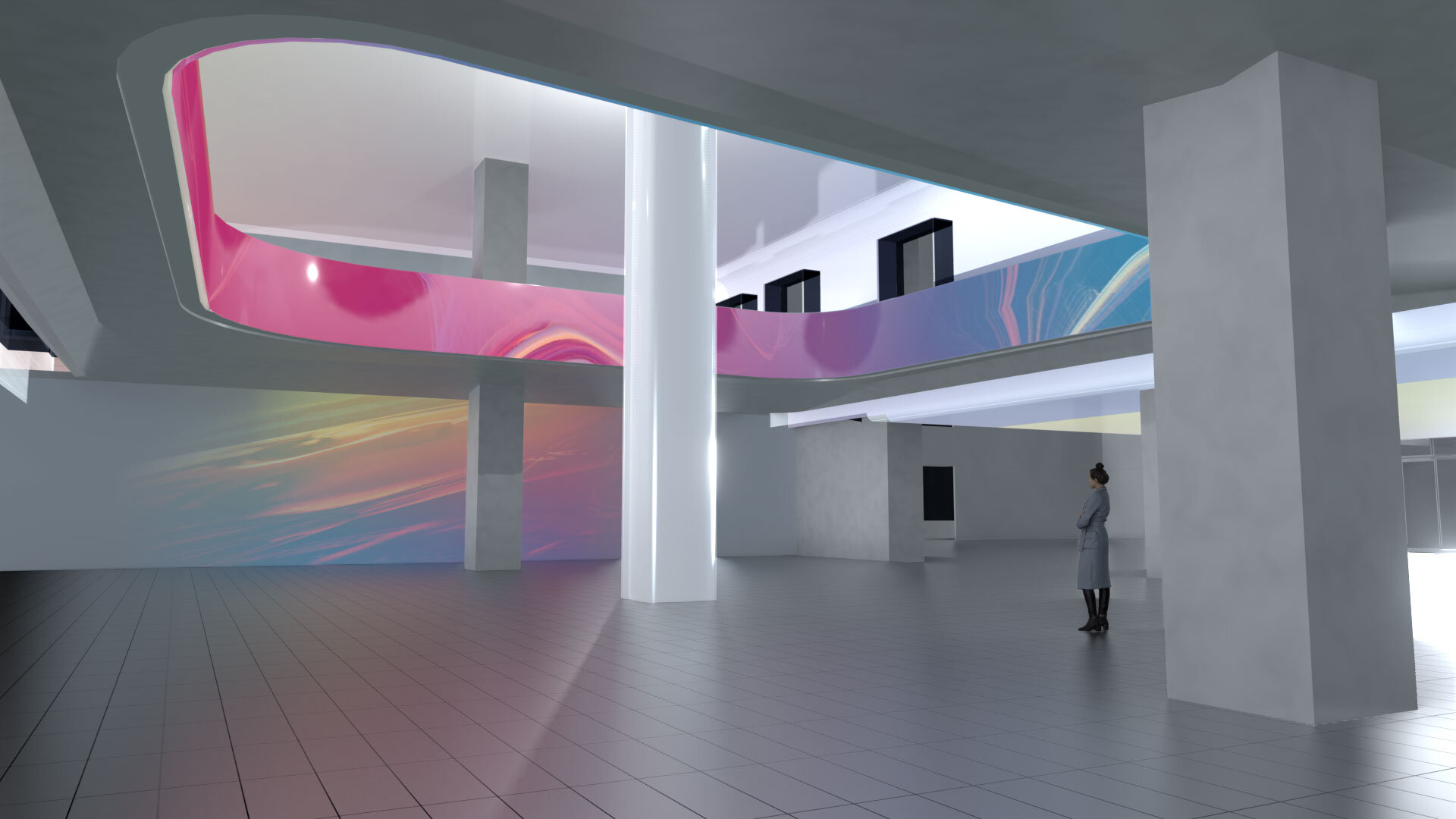
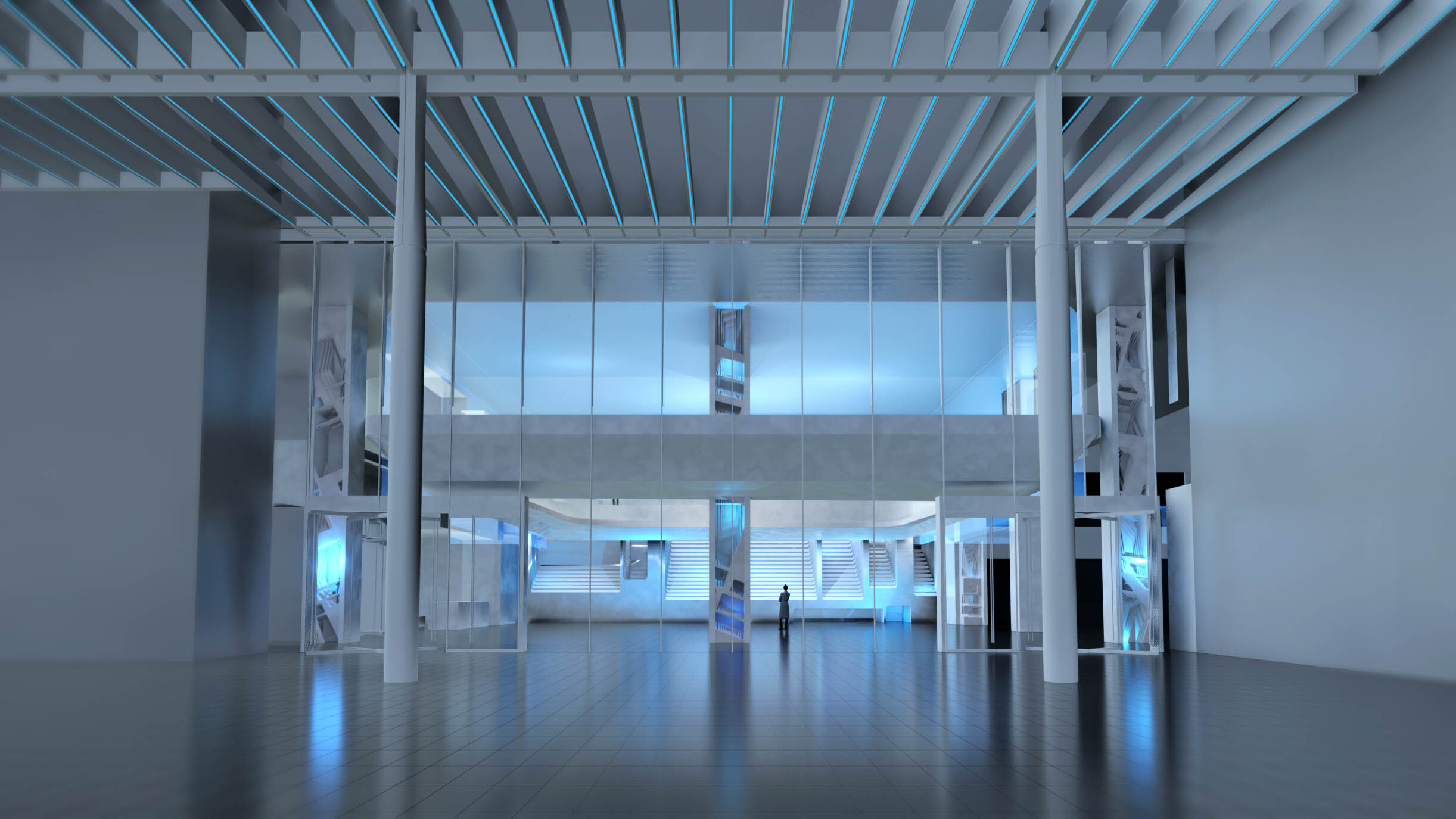
Final Design: Embedded Media Platforms
Compelling Environments
If these walls (and pillars) could talk, they might whisper the chatter of a babbling brook, or utter a poem describing a floating mote of dust as it drifts through a shaft of sunlight.
Immersive Takeover
The expansive displays and ambient lighting allow for the ability to transport occupants into the various worlds from the impressive entertainment properties in Time Warner’s catalog.
In Development
Gensler is currently taking the project from concept to reality, creating an immersive space powered by 70 million pixels.
Shown here is Gensler’s concept render representing the finalized design.







